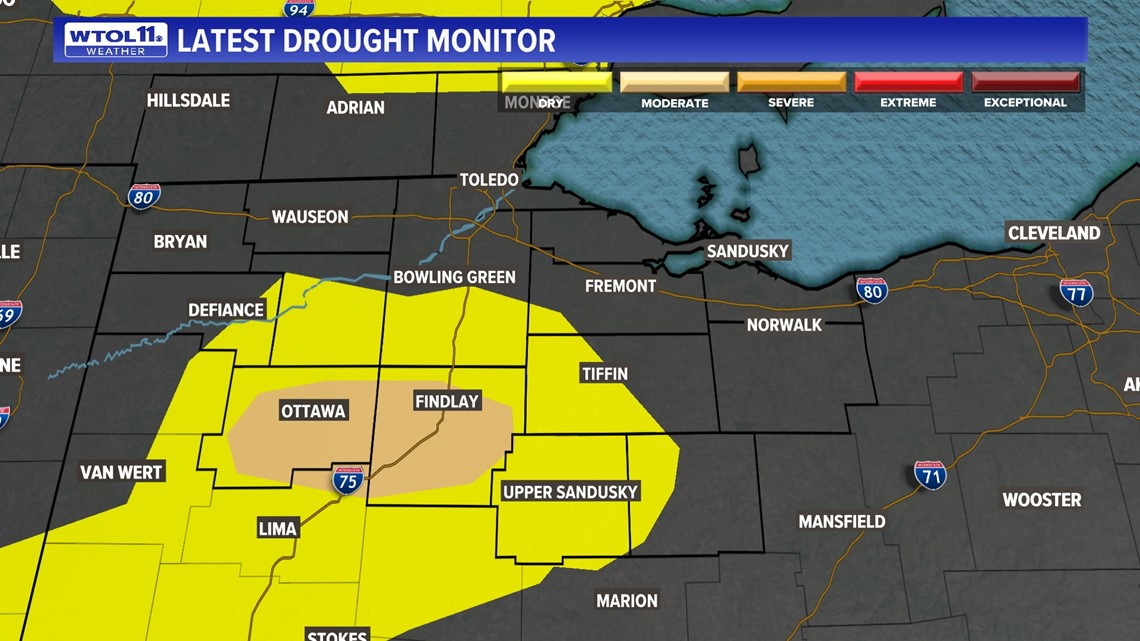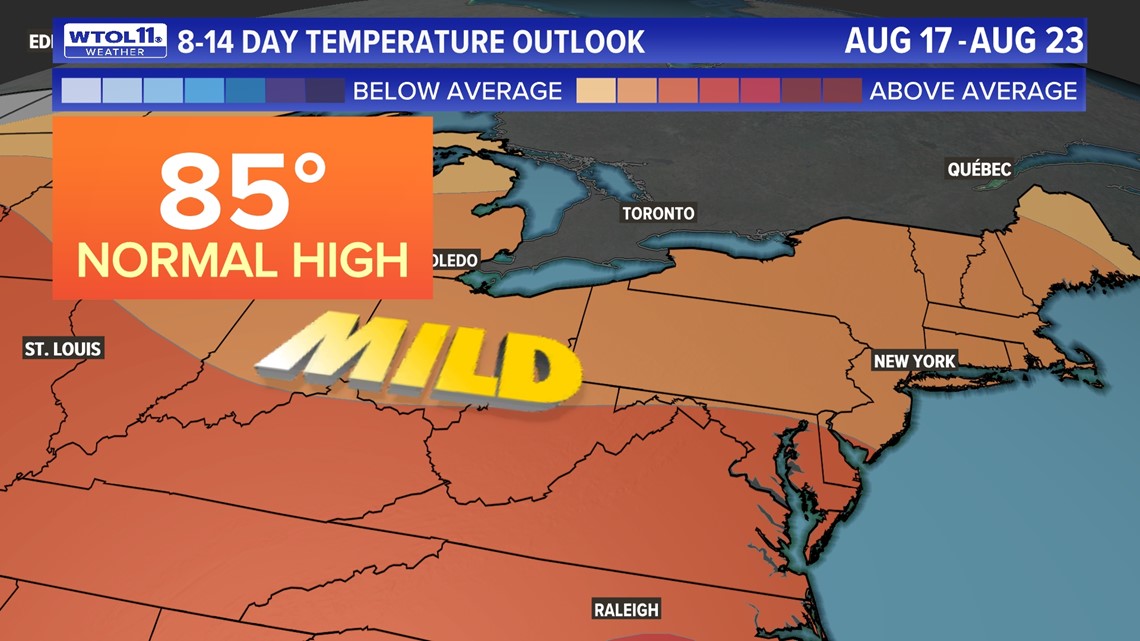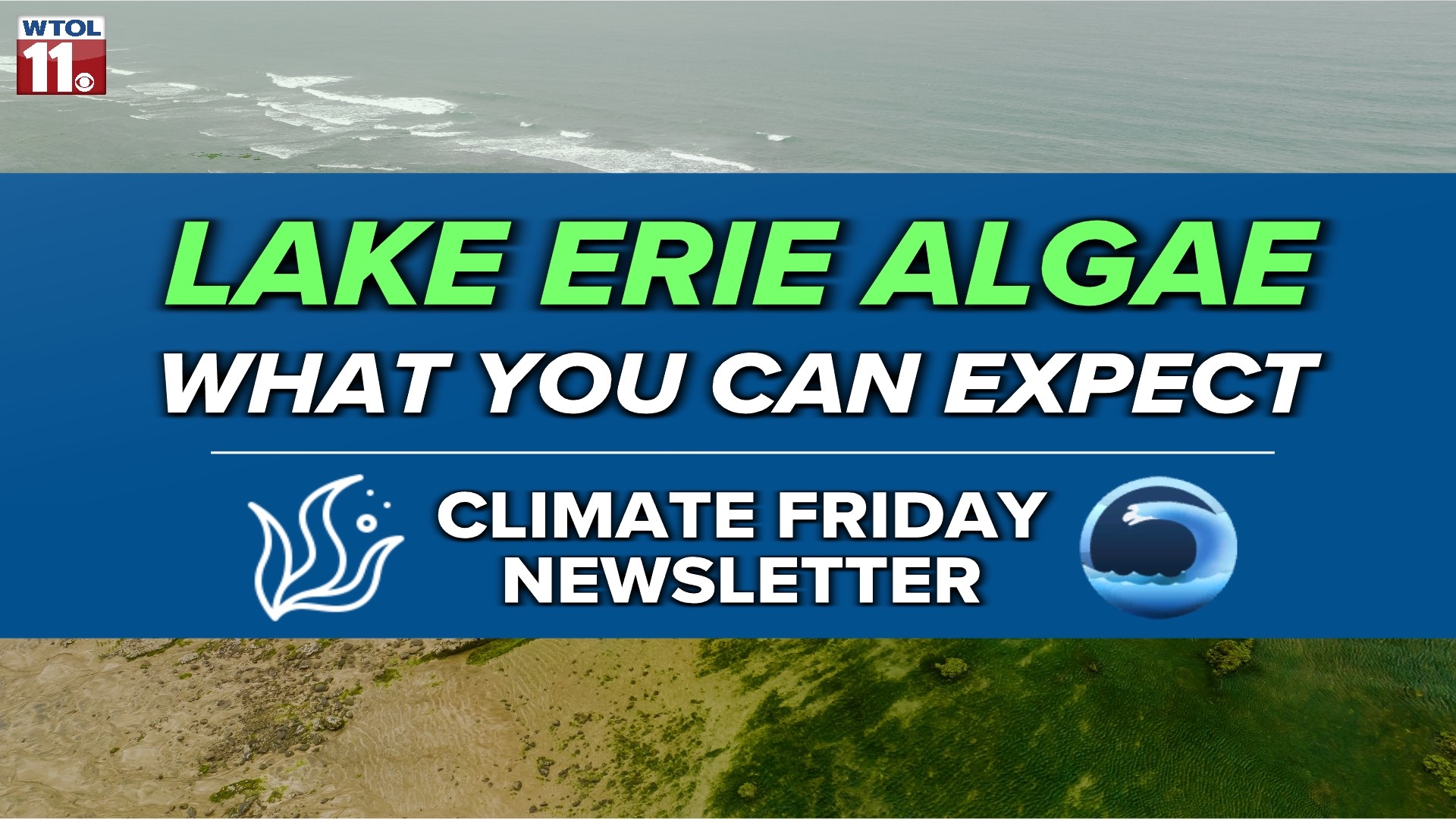TOLEDO, Ohio — In this week's edition of Climate Friday, Meteorologist John Burchfield will discuss the impacts of the Lake Erie algal bloom on your health, break down our summer rainfall and let you know why we haven't seen any major heat this season.
As Lake Erie water temperatures warm rapidly, harmful algae has developed in the western basin. Current buoy readings show temperatures of 76 degrees in the Maumee Bay and 75 degrees near Sandusky and Port Clinton.
These warm water temperatures are characteristic of late summer and early autumn. Every August, warming temperatures coupled with nutrient leaching of various minerals like phosphorus in the water facilitate the development of an algal bloom on Lake Erie.


The harmful algae bloom typically peaks in August and September during late summer and early autumn. Earlier this year, experts predicted a slightly smaller-than-average algae bloom this year, measured quantitatively in terms of a severity index around 3. On July 27, however, scientists with the NOAA updated their forecast to predict a bloom severity of 4.5 at minimum, with a maximum of 5.5.
The greater the severity index, the larger the bloom. Some years, such as 2015, 2017 and 2019 delivered large outbreaks of harmful algae with a severity index near or over 10.
Though this year's bloom is expected to be smaller than usual, it will still pose hazardous health impacts, especially in the western basin. On Wednesday, officials with the Toledo-Lucas County Health Department advised the public to avoid all contact with the waters at Maumee Bay State Park due to toxic levels of harmful algae.


Exposure to these toxins can result in symptoms from skin ailments like rash or blisters to respiratory conditions and vomiting. Adults, kids, and pets should all avoid the waters of the Maumee Bay until water sampling shows significant improvements in toxicity levels. This year's harmful algal bloom is just beginning, and the WTOL 11 Weather Team will keep you posted on what the rest of August and September have in store.
Heavy rain can exacerbate algal blooms due to runoff of nutrients from fertilizers into the lake. After a record-breaking dry spring, this summer has dosed out rounds of soaking rain and strong thunderstorms. Our summer rainfall total is up to a whopping 8.54 inches, nearly an inch above-average. This historically wet July contributed a good chunk of this rainfall with a monthly total of 5.75 inches.
August has started off with a wet weather pattern featuring rounds of rain and storms. More thunder is in the forecast today, and soaking downpours may add to recent rainfall totals. Despite the substantial summertime rainfall, parts of northwest Ohio and southeast Michigan still need more moisture.
The latest drought monitor still reflects moderate drought conditions in parts of Putnam and Hancock Counties. Areas of Defiance, Henry, Wood, Sandusky, Seneca, Wyandot, and Crawford counties are considered "abnormally dry". While not an official drought, these locations shaded in yellow on this map still could use a little rain.


Locations north of the Maumee River have received significant rainfall amounts this summer and are caught up on precipitation. With a wet weather pattern continuing into mid-August, you can trust the WTOL 11 Weather Team for the latest forecast.
But will the weather pattern turn hotter? This summer has featured some humidity, but hardly any major heat. With only five 90-degree days, the summer of 2023 has been devoid of major heat. Last summer brought an impressive 21 days over the 90-degree threshold.
The WTOL 11 Weather Team expects a slight warmup for the latter half of the month, which may include more days in the mid to upper-80s. Despite this pattern change that may result in a milder setting, no major heat is on the horizon.


As the algal bloom heats up, temperatures may also begin to rise. Whatever the weather, you can trust the WTOL 11 weather team for the latest forecast. Subscribe to the Climate Friday Newsletter for new content each Friday from Meteorologist John Burchfield.
MORE EPISODES OF CLIMATE FRIDAY

